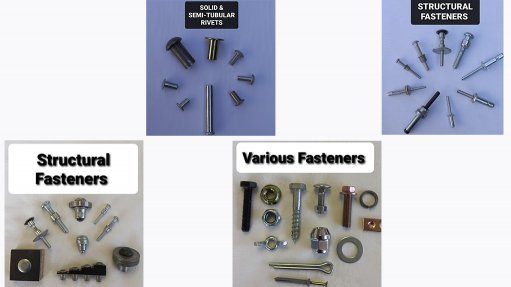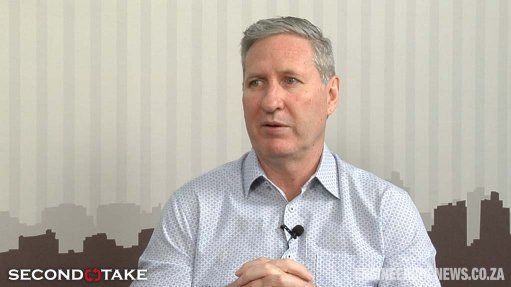Non-agricultural GDP shrank in the first quarter of the year – TIPS
Economic research nonprofit Trade and Industrial Policy Strategies said in its ‘First Quarter 2025 Real Economy Bulletin’ that GDP barely grew from the fourth quarter of 2024 to the first quarter of this year, and that most sectors shrank, with a 0.3% contraction in annualised terms in nonagricultural GDP.
In year-on-year terms, the GDP growth rate was less affected by the jump in agricultural value added. The GDP expanded by 0.5% from the first quarter of 2024 to the first quarter of 2025. Excluding agriculture, the figure was 0.4%.
Both growth rates lagged well behind the population growth of about 1.4%, which means that GDP per person continued to decline.
The economy eked out any expansion at all during the quarter only because of extraordinary growth reported for the relatively small agricultural sector, it said.
In early 2025, agriculture contributed only 2.8% of the GDP. Its value added reportedly jumped at an annual rate of 16% in the first quarter, with actual growth at 3.4%. The volatility reported for agricultural value add since 2016 continued during the quarter.
The rest of the economy has remained stable, and sluggish. In the 56 quarters from 2000 to 2016, growth reported for agriculture alone never sufficed to move the overall economic trend from negative to positive. In the 45 quarters from 2016 to March 2025, that switch occurred eight times.
“The weakness of the economy emerges graphically from sectoral growth rates outside of agriculture, with value added in mining dropping at an annual rate of 4% in the first quarter of 2025, manufacturing shranking by 2%, utilities and construction by 3%, and general government services by 0.2%.
“In logistics, trade and business services, up by less than 0.5% in annualised terms, were the only strong growth outside of agriculture.
“Further, only agriculture and public and private services have surpassed pre-pandemic levels. In the first quarter of 2025, value added in mining was 4% lower than in the first quarter of 2019. Manufacturing was down by 2%.”
Additionally, the decline in manufacturing was spread over virtually every industry, according to sales figures. The only industries to show any sales growth in the past quarter were wood and paper, clothing and textiles and downstream chemicals and plastics. Metal sales shrank by 6%, mostly owing to falling prices and declining ferrochrome production.
Similarly, automotive and machinery sales each shrank 4%. Metals and transport equipment sales have dropped 10% in the past two years. Higher US tariffs on these products, initiated mostly at the end of the first quarter, are likely to hit them hard, TIPS said.
Further, food processing sales dropped 3% in the year to the first quarter. The industry had largely driven manufacturing’s recovery from the pandemic downturn in 2020, but its sales dropped steadily through 2024.
Meanwhile, private investment fell at an annual rate of 5% in the first quarter of 2025, the worst decline since the pandemic downturn in the second quarter of 2020.
As a result, although investment by State-owned companies increased, total gross fixed capital formation shrank by 2%.
Investment is now 11% below its post-pandemic peak in the second quarter of 2023, and 14% below the first quarter of 2019, the research organisation pointed out.
EMPLOYMENT
Employment grew in the year to March 2025, although it continued to lag expansion in the working-age population. However, the formal sector as a whole lost jobs.
Falling employment in domestic service and retail trade was reportedly offset by growth in manufacturing, which gained just over 70 000 new positions, as well as most other services.
Only the metals and clothing industries experienced substantial job losses within manufacturing. There were significant job gains in machinery and automotive despite their falling sales.
Stagnant employment over the year to the first quarter veiled significant shifts in the nature of employment. Formal and domestic employment dropped one-quarter of a million jobs, while informal work expanded by around the same number.
The decline in formal employment in the first quarter exceeded the normal seasonal downturn, TIPS added.
In contrast, in March 2025 formal employment was 2% higher than it was before the Covid-19 pandemic. Both agricultural and informal jobs have climbed over 10% compared with 2019.
Total employment growth continues to lag the working-age population. As a result, the share of the population with income-generating employment fell to 40% this year, back to levels last seen in 2022. Internationally, the ratio is about 60%.
Changes in net employment also varied by production sector. In the year to March, construction and manufacturing gained employment, but agriculture shrank marginally, by 10 000 jobs.
Manufacturing added 70 000 jobs, a 4% increase. Still, employment in the sector remains lower than before the pandemic.
Construction and utilities gained 65 000 jobs, or 5%. The tertiary sector lost 80 000 jobs.
Retail and hospitality accounted for virtually all of the decline. They reportedly lost 245 000 jobs, or 10% of total employment in the sector. Domestic work shed another 100 000 positions.
These losses were mostly offset by the gain of 285 000 positions in business and other services and in logistics, including personal and freight transport plus communications.
Virtually all of the increase in manufacturing employment was in transport equipment and machinery, despite their reportedly sharp fall in sales over the past year. Together, these industries reportedly added over 50 000 jobs.
Further, 40 000 net new jobs in the paper value chain, from wood to paper to paper products, were added. In contrast, metals production shed 40 000 jobs, which is a 15% decline. Additional job losses occurred in clothing, textiles, and footwear, at 11%.
Article Enquiry
Email Article
Save Article
Feedback
To advertise email advertising@creamermedia.co.za or click here
Comments
Press Office
Announcements
What's On
Subscribe to improve your user experience...
Option 1 (equivalent of R125 a month):
Receive a weekly copy of Creamer Media's Engineering News & Mining Weekly magazine
(print copy for those in South Africa and e-magazine for those outside of South Africa)
Receive daily email newsletters
Access to full search results
Access archive of magazine back copies
Access to Projects in Progress
Access to ONE Research Report of your choice in PDF format
Option 2 (equivalent of R375 a month):
All benefits from Option 1
PLUS
Access to Creamer Media's Research Channel Africa for ALL Research Reports, in PDF format, on various industrial and mining sectors
including Electricity; Water; Energy Transition; Hydrogen; Roads, Rail and Ports; Coal; Gold; Platinum; Battery Metals; etc.
Already a subscriber?
Forgotten your password?
Receive weekly copy of Creamer Media's Engineering News & Mining Weekly magazine (print copy for those in South Africa and e-magazine for those outside of South Africa)
➕
Recieve daily email newsletters
➕
Access to full search results
➕
Access archive of magazine back copies
➕
Access to Projects in Progress
➕
Access to ONE Research Report of your choice in PDF format
RESEARCH CHANNEL AFRICA
R4500 (equivalent of R375 a month)
SUBSCRIBEAll benefits from Option 1
➕
Access to Creamer Media's Research Channel Africa for ALL Research Reports on various industrial and mining sectors, in PDF format, including on:
Electricity
➕
Water
➕
Energy Transition
➕
Hydrogen
➕
Roads, Rail and Ports
➕
Coal
➕
Gold
➕
Platinum
➕
Battery Metals
➕
etc.
Receive all benefits from Option 1 or Option 2 delivered to numerous people at your company
➕
Multiple User names and Passwords for simultaneous log-ins
➕
Intranet integration access to all in your organisation


















